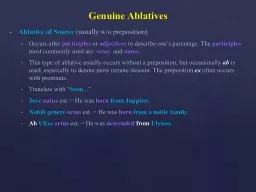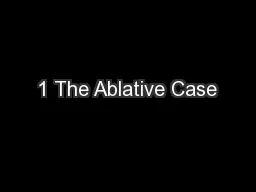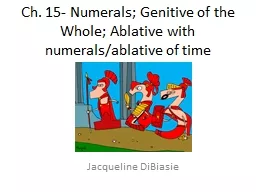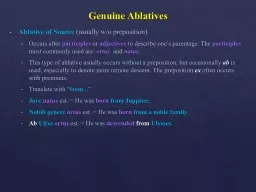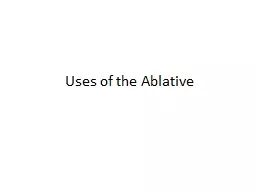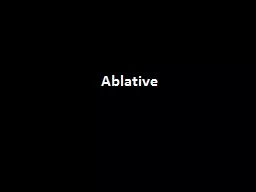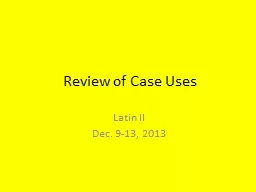PPT-Week 13 Review Topic: The Ablative Case
Author : natalia-silvester | Published Date : 2019-01-22
The Ablative Case The Ablative Case in Latin is really a combination of THREE of the original Proto IndoEuropean cases The Ablative which contains the genuine
Presentation Embed Code
Download Presentation
Download Presentation The PPT/PDF document "Week 13 Review Topic: The Ablative Cas..." is the property of its rightful owner. Permission is granted to download and print the materials on this website for personal, non-commercial use only, and to display it on your personal computer provided you do not modify the materials and that you retain all copyright notices contained in the materials. By downloading content from our website, you accept the terms of this agreement.
Week 13 Review Topic: The Ablative Case: Transcript
Download Rules Of Document
"Week 13 Review Topic: The Ablative Case"The content belongs to its owner. You may download and print it for personal use, without modification, and keep all copyright notices. By downloading, you agree to these terms.
Related Documents

